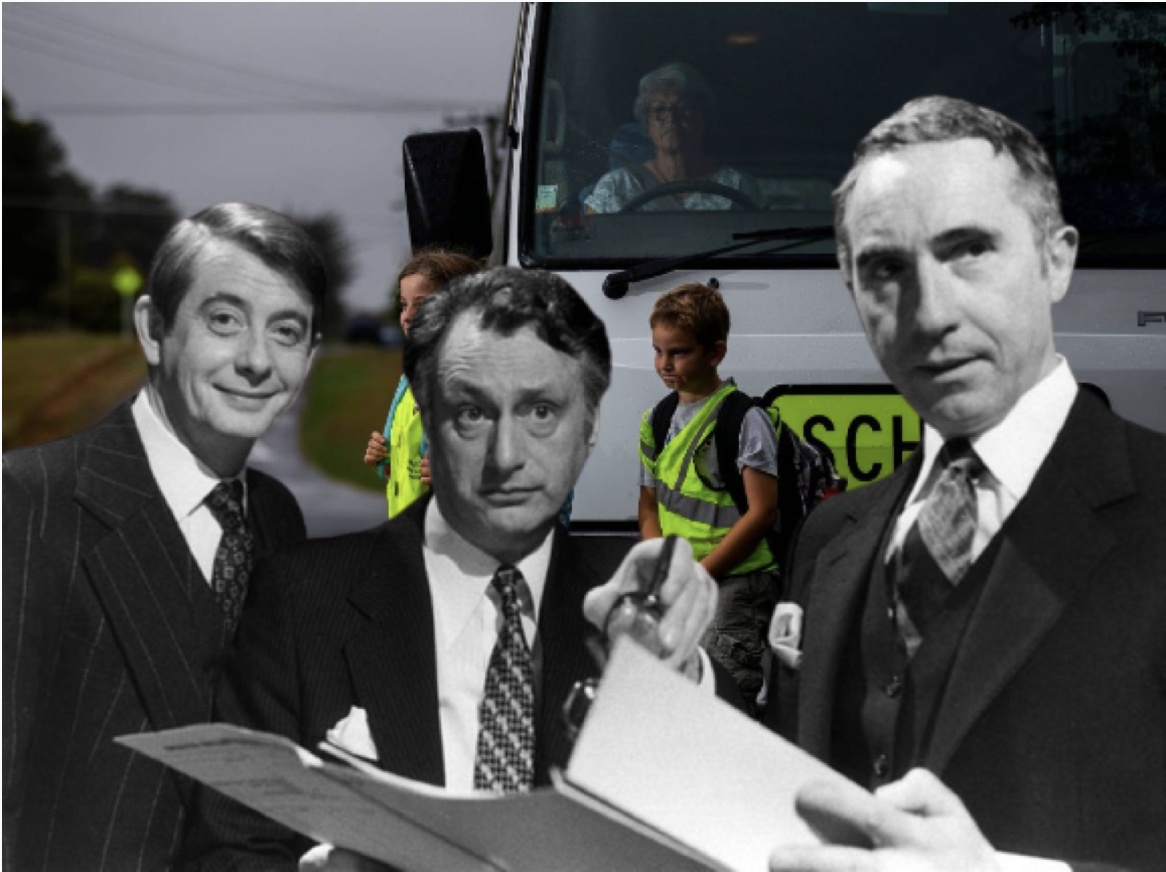The NZ Herald reports that hundreds of children living on rural roads near towns are being barred from school buses under a law that hasn’t changed since 1904. On Inland Road near Helensville two Kaipara College students live 3.8 kilometres from the school but the bus is only allowed to pick up those who live 4.8 kilometres or more. I am familiar with this road because I had friends living on it. It is a dangerous unsealed road with no footpaths and no students should be made to walk to school on it. I am sure this is but one example of many similar rural roads students are made to walk on.
A Ministry of Education spokeswoman said the limits were set in the Education Act of, wait for it, 1877. You read that correctly, 1877. This Act introduced compulsory education for all children aged 7-13 who lived “within the distance of two miles measured according to the nearest road from a public school.”
“An amendment was made in 1904 to recognise the different distances per age group,” the Ministry said. “At the time, these settings reflected that the walking distance was likely to be a barrier to rural children attending schools.” And now for a bit of Sir Humphrey speak –
“These established distances continue to be applied fairly and consistently today. While there has been no change to the criteria for over 100 years, people have greater access to transport [ school bus excepted], more vehicle options and improved roading [Inland Road excepted], than was available in the 1900’s.”
School buses used to do pickups in the Kaipara area when they had empty seats but due to population growth this is no longer the case. The ruling doesn’t apply to primary school children as their transport is free. I’m not sure what happens if there are more children than the bus can legally hold. The explanation from the Ministry of Education was, in my view, a classic piece of civil service speak worthy of an episode of Yes Minister.
Information
Satire

Prime Minister
Humphrey, we really must do something about students and school buses.
Humphrey
Oh, really Prime Minister. Are some being hit by them?
Prime Minister
I’m referring to the law Humphrey. It needs to be amended.
Humphrey
What law precisely are you referring to Prime Minister?
Prime Minister
The Education Act of 1877 which was last amended in 1904
Humphrey
Why the rush Prime Minister?
Prime Minister
That was 117 years ago! I wouldn’t exactly call it a rush.
Humphrey
Well Prime Minister, if something is working well we are always reluctant to make changes.
Prime Minister
But in respect of students not being able to access school buses it isn’t working well.
Humphrey
Why so? It’s applied consistently and fairly.
Prime Minister
Because unless they live 4.8 kilometres from a public secondary school they’re not entitled to use a school bus and have to walk on dangerous roads.
Humphrey
Yes Prime Minister, but think of the exercise they’re getting. Problem solved.
Prime Minister
The problem is not solved Humphrey and something must be done about it.
Humphrey
If you say so Prime Minister. I’ll set up a departmental inquiry. We’ll look at the total number of school buses in each area, how many schools they serve and how many children travel in them and of course, population growth and the number of unsealed roads school buses use in each area.
Prime Minister
And how long will all that take?
Humphrey
Ooh, difficult to say Prime Minister. But, with any luck, probably less than the 117 years since it was last amended.
Methinks that perhaps the Ministry of Education might be well advised to spend less time designing a faulty history curriculum and more time on students’ safety.
Please share this BFD article so others can discover The BFD.









